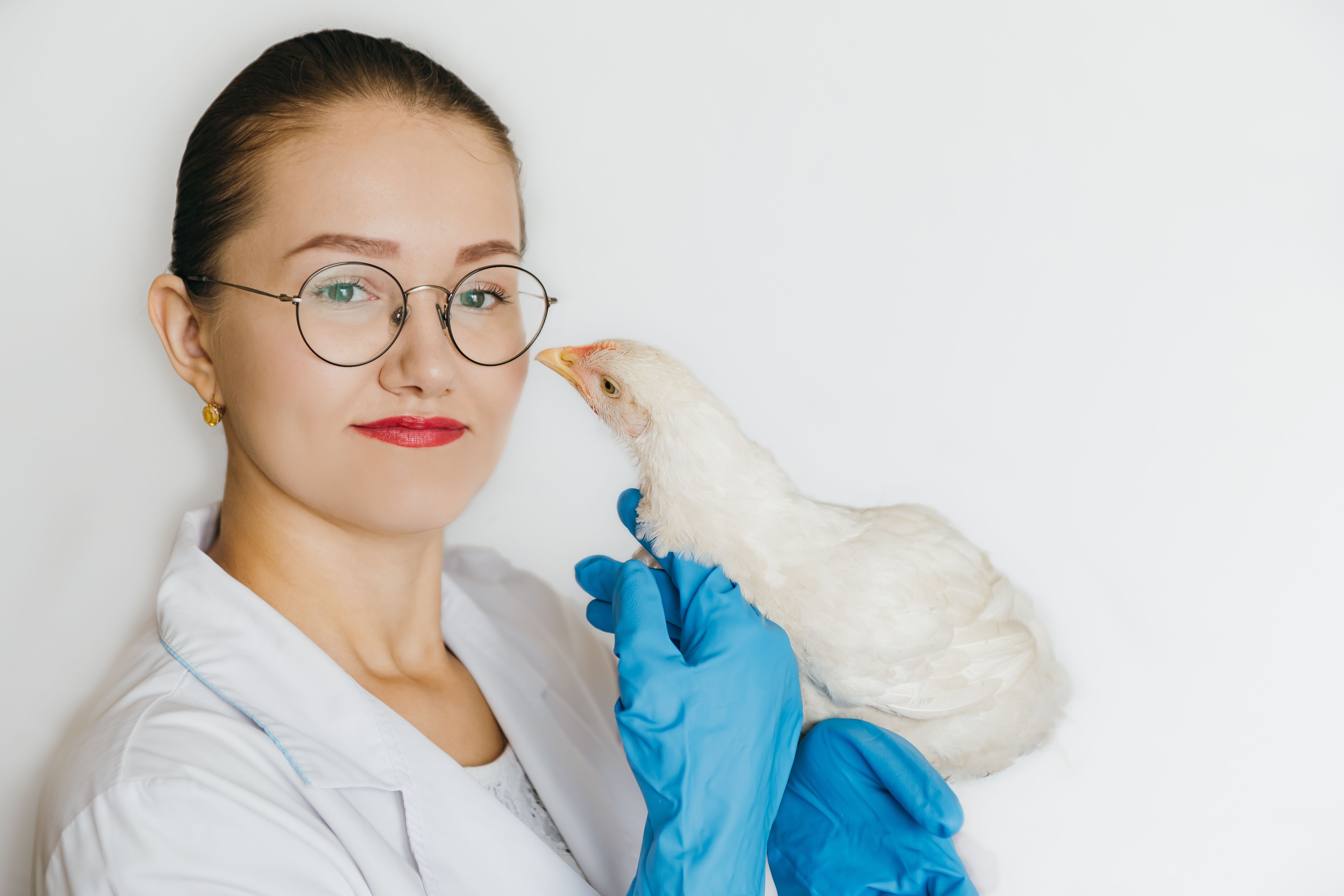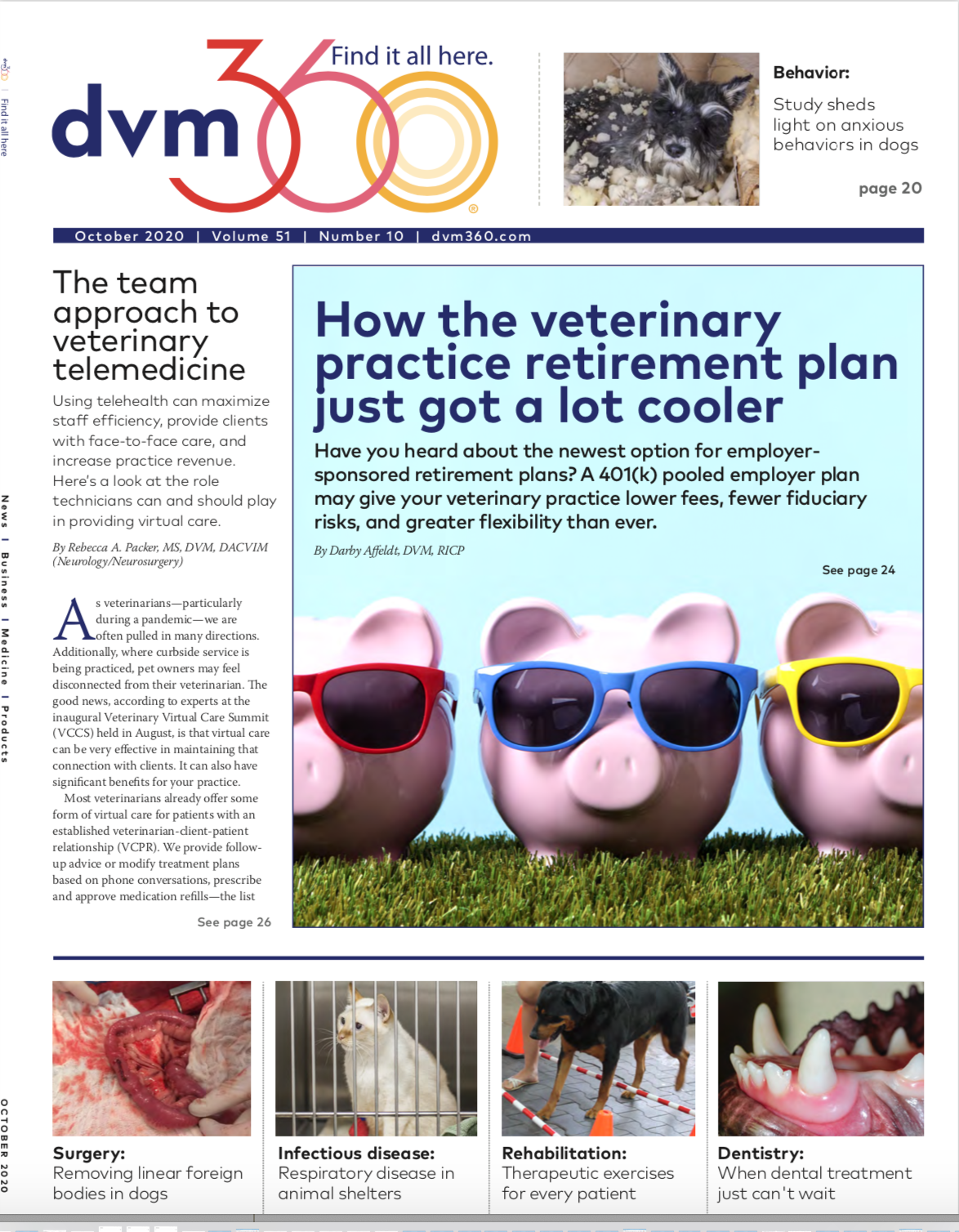Hatching poultry services in your veterinary practice
Companion animal practitioners can take poultry under their wing by incorporating into their practice medical care for these birds and by counseling clients on proper fowl husbandry.
Charles Russell / stock.adobe.com

In recent years, chickens have strutted their way into the fabric of domestic life. Along with turkeys, ducks, pheasants, and other birds, chickens are embraced as members of the family, acquired by breed fanciers and 4-H’ers, maintained by locavores who use them for meat and eggs, and taken in by folks looking to rescue the discarded, particularly roosters.
While pet owners know where to look when their cats and dogs get sick, they often encounter snags when seeking medical attention for their poultry, said Rocio Crespo, DVM,DVSc, DACPV, professor at North Carolina State University College of Veterinary Medicine, during a session at the AVMA Virtual Convention in August.
“Unfortunately, poultry veterinarians typically only work with big commercial farms and will not take small poultry flocks as patients,” she said.
Small animal veterinarians to the rescue! Backyard poultry is a niche for veterinarians who wish to dust off their unused avian books and bring their knowledge and skills to those of their clients who tend small flocks at home. “The veterinarian can help owners optimize their animals’ well-being by improving poultry management, welfare and biosecurity,” Crespo said.
The menacing chicken
Veterinarians play a role not only in individual bird health, but also in that of the humans who keep them. First, many avian pathogens are zoonotic. Birds are natural carriers of Salmonella and Campylobacter, which can sicken people.1 Domestic fowl can also become ill from viral infections, such as Newcastle disease and avian influenzas, which can be transmitted to their human caregivers. Second, most flock owners use their birds for food—eggs and meat—and veterinarians need to school them on the judicious use of antimicrobials to prevent contamination.
“Most owners consume the eggs of their feathered friends,” said Crespo, “so we should be careful about the therapeutics we provide, and we must emphasize the importance of disease prevention and biosecurity.”
Objective measures of flock health
By taking a standardized approach to backyard flocks, Crespo said, the veterinarian can harvest the variables that impact birds’ health and well-being. She groups these data into 3 categories:
- Animal-based measures: A thorough patient history should be taken and a physical exam conducted in a methodical way that incorporates all organ systems. The exam should address body condition, feather scoring, footpad health (intact keratin vs ulcerations), ambulation (eg, lameness, paralysis), respiratory sounds, gastrointestinal health (eg, signs of enteritis), and behavior. “A systematic approach to the avian physical examination is critical, as early signs of welfare problems are subtle and sometimes disguised,” she explained. “The natural defense mechanism of poultry is to appear healthy despite illnesses to avoid predation or harassment by other members in the flock.”
- Resource-based measures: Surveys of the facilities, shelter, air quality, litter, lighting, thermal comfort, feeders, drinkers, security, and euthanasia equipment can help the veterinarian identify potential threats to animal welfare.
- Protocol-based measures: The veterinarian should note husbandry procedures, particularly daily bird observation, animal handling, feeding practices, vaccination and parasite prevention plans, morbidity/mortality records, and caretaker training.
Freeing the birds
Guidelines for farm animal welfare were drawn up around 1980. These “freedoms,” as they are known, have been incorporated into more recent animal care industry procedures. Crespo described the 5 freedoms as they relate to the care of poultry.
Freedom from thirst, hunger, and malnutrition
Metabolic and nutritional diseases drive a lot of sickness and death in small flocks and are, in many ways, linked. Take, for instance, fatty liver hemorrhagic syndrome, which is spawned by overfeeding and obesity.2 The fact that fatty liver hemorrhagic syndrome causes over half of metabolic disease–related deaths in home-based poultry flocks, said Dr. Crespo, indicates a general lack of knowledge among owners about general poultry nutrition.
Most feed their chickens ad libitum, incorporating excessive amounts of kitchen scraps and cracked corn, essentially a treat. Weight should be monitored, with birds maintaining an approximate keel-breast muscle angle of about 45%.
Along with advising owners about ideal body condition, veterinarians should coach them about feed choices: mash (fine ground for young birds), crumble (granular meal for growing birds), scratch (medley of dietary components that enable birds to select pieces they want, possibly leading to dietary imbalance), and pellets (homogeneous pieces that represent balanced diet, can be expensive).
Other pitfalls to avoid: flooring consisting of fine sand, which can cause gastrointestinal impactions; waterers hung low and easily spilled, leading to wet bedding that can create mold and ammonia buildup; feeders set low enough to be accessible to rodents; and litter so dry that pathogens become aerosolized.
Freedom from pain, injury, and disease
Most poultry health problems are classified as musculoskeletal, generally caused by trauma by other animals or by flock mates, Crespo said. The second most common issue chicken veterinarians see is pododermatitis, or bumblefoot, which is quite painful and multifactorial in etiology.3 In commercial operations, where it is common, bumblefoot results from poor husbandry conditions, such as elevated dietary soybean meal, high pH of droppings, moist litter, and rough flooring.
Moist litter and rough flooring are frequent causes of bumblefoot among backyard flocks as well, although home-based birds often present with the condition because they are overweight from lack of activity, or have overgrown toenails, dry skin, or previous foot injuries.
Perch condition plays a key role in foot health for backyard birds. Sharp protrusions can cause trauma, and narrow perch width (< 4 inches) leads to excessive forces on the feet; both predispose birds to bumblefoot.
Neoplasia of the reproductive tract is common in hens, particularly as birds get older, and is diagnosed more frequently in those maintained for egg laying.4
Infectious diseases,1 such as Marek disease in chickens, as well as a host of zoonotic viral and bacterial infections, are ubiquitous in small flocks—a fact, Crespo explained, that indicates that most people do not have the proper health and sanitation practices in place.
Biosecurity lapses include failure to wash hands, wear dedicated poultry-handing clothing and footwear, and control rodents; allowing home flocks to have contact with wild birds; and the common practice of snuggling with chickens and welcoming them into the home.3
Sanitation shortcomings also benefit external parasites, which flourish more successfully in backyard flocks than in large commercial operations, where pest management programs are typically more rigorous.
Freedom from discomfort
For backyard birds, comfort means an appropriate environment. Veterinarians who provide care for poultry should be able to counsel clients on their birds’ shelter, nesting boxes, perches, litter, and environmental enrichment.
Freedom from fear and distress
In a bird’s eye, fear seeds from many sources. If the source is the lurking fox that whips the flock into a frenzy every evening, the poultry keeper may need to bolster security. Other fear factors, said Crespo, include human handling, transportation, euthanasia procedures, noises, and social unrest. “Poultry experience many potentially stressful events during the production cycle,” she said.
Birds are likely in distress when they have severe or debilitating pain, are unable to stand or walk, cannot access food or water, or have lost weight.
Freedom to express normal behaviors
Behavioral freedom hinges on sufficient space, proper facilities, and company of animals of one’s own kind. “Chickens are social animals and should be kept in groups,” Crespo said.
Research on chicken society in the late 1980s uncovered how the birds while away the hours. Foraging takes up the largest chunk, followed by feeding, then walking and, lastly, resting; about 16% of their time is spent in locomotion. Egg-laying behaviors consume much of their waking moments. And when sick, chickens often self-isolate, which leaves them prone to attack by other members of the flock.
But sick birds aren’t the only ones at risk. Feather picking is a normal behavior in poultry, triggered by nutritional imbalances as well as hen hierarchy. Even feather color differences can lead to cannibalism, and Crespo recommended that flocks consist either of birds of the same color or birds of 3 or more different colors.
Cannibalism can be minimized by facilitating environmental enrichment and opportunities for redirection. Hens should be provided hiding places, and curtains should encase nest boxes to prevent the vent pecking that sometimes occurs during oviposition.
Poultry life is distinct from that of other species, and small animal veterinarians would fill an invaluable niche by providing care for their hospital clients’ backyard farm birds.
References
1. Basler C, Nguyen T-A, Anderson TC, Hancock T, Behravesh CB. Outbreaks of human Salmonella infections associated with live poultry, United States, 1990–2014. Emerg Infect Dis. 2016;22(10):1705-1711. doi:10.3201/eid2210.150765.
2. Trott KA, Giannitti F, Rimoldi G, et al. Fatty liver hemorrhagic syndrome in the backyard chicken: A retrospective histopathologic case series. Vet Pathol. 2013;51(4):787-795. doi:10.1177/0300985813503569
3. Elkhoraibi C, Blatchford RA, Pitesky ME, Mench JA.Backyard chickens in the United States: a survey of flock owners. Poultry Sci. 2014;93(11):2920-2931. doi:10.3382/ps.2014-04154
4. Crespo R, Senties-Cue G. Postmortem survey of disease conditions in backyard poultry. Journal of Exotic Pet Medicine 2015;24(2):156-163. doi:10.1053/j.jepm.2015.04.003
